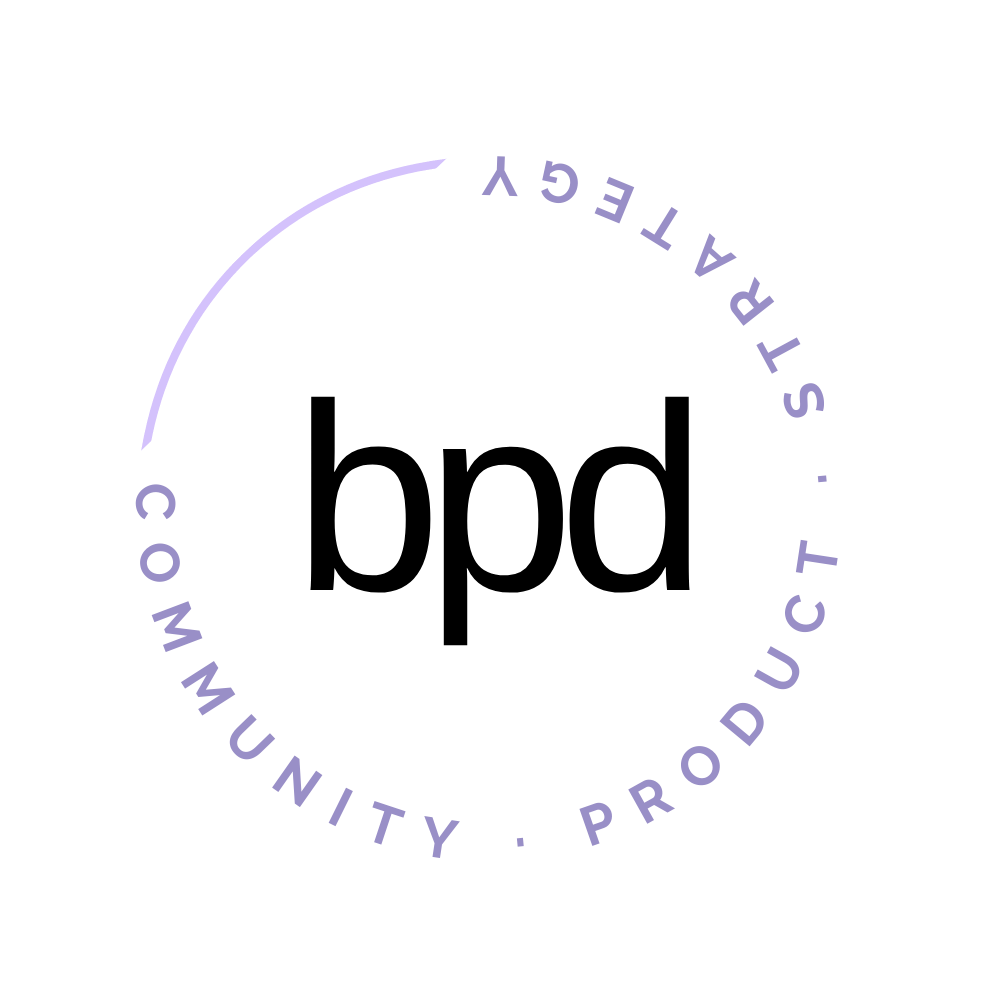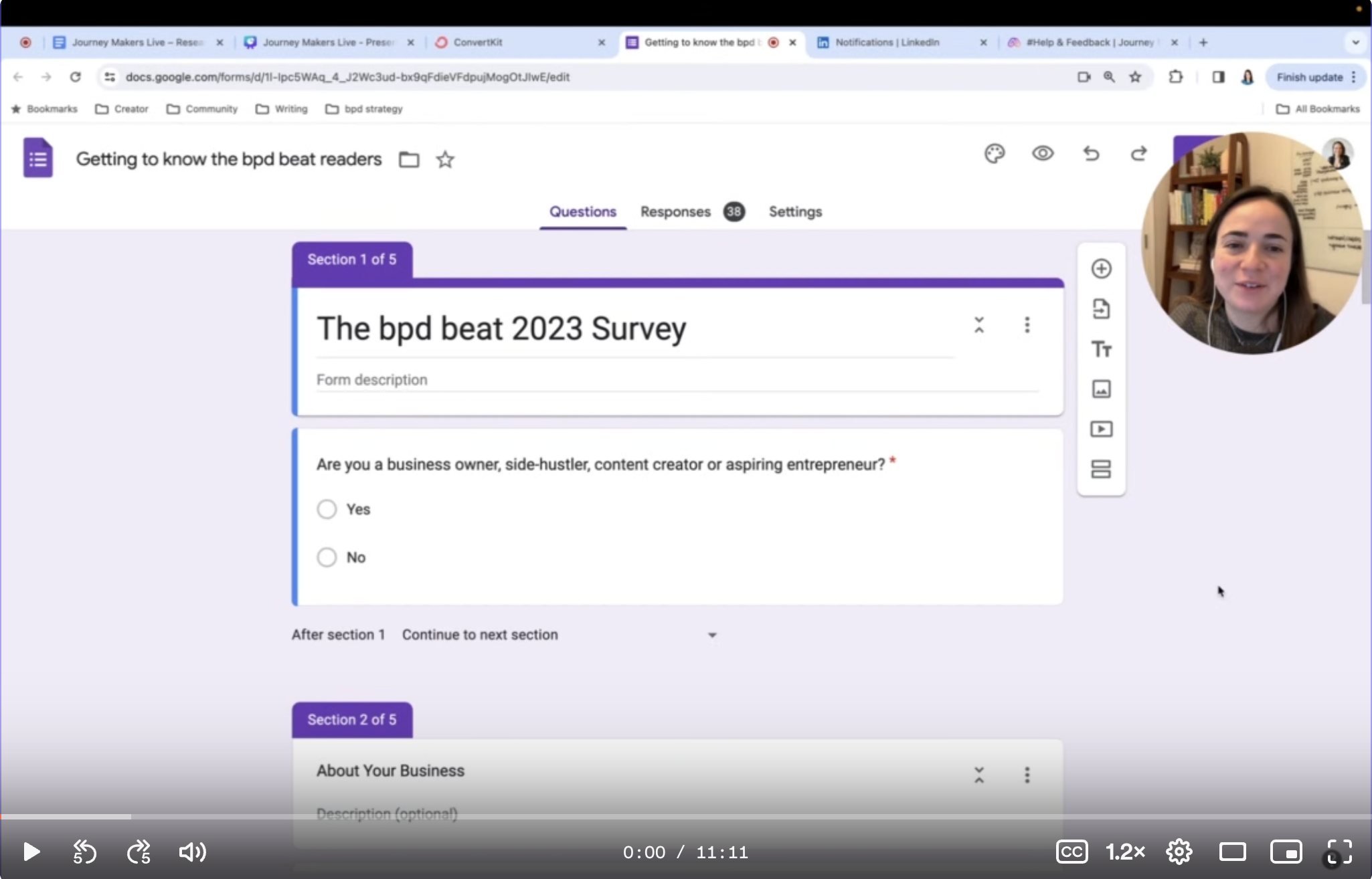#53 Survey Your Community
A client told me something this week that I've heard again and again when talking about their products ... "we have a good gut feeling about this."
But they weren't sure how to improve their membership because they felt they were providing SO MUCH VALUE but still experiencing significant monthly churn.
So I asked...
What do you believe is true about your community but don't have the data or proof to back it up?
They came up with a list of things. I said, "ok this is what we need to research before we restructure the membership."
The gut feelings with no data behind it are the assumptions that we make in our businesses.
The good news is that assumptions are a great starting point to help you develop a research plan.
Today I am going to share my survey tips straight from my program workbook to help you write a good survey – but keep in mind that a survey isn't good enough to give you actionable data, alone.
When you're doing research you want to have both qualitative and quantitative data. Surveys provide quantitative data.
I recommend doing at least 5, 1:1 interviews with your customers to collect qualitative data as well.
10 Survey Tips:
Set goals for your survey. What do you hope to learn from it? How is it going to help you make business decisions?
Keep it as short as possible. Less than 5 mins is optimal for people to complete it. If it's over 10 minutes you'll see significant drop off.
Don’t ask questions you can find the answers to elsewhere – like device type or location. These questions are annoying to answer and are an unproductive add to the survey length.
Make sure your questions are quantitative in nature. What questions are valuable to get a quantifiable response – like the top 3 challenges across all respondents.
Only collect data that you plan to use. You'll notice you want to add questions out of random curiosity but you should have a plan for how you'll use the data you collect.
Start your survey with easy questions. Your respondents need a quick win – make it a quick multiple choice question to get started like "Are you a business owner? Y/N"
Limit to one or two open-ended questions. Surveys are not the place for long paragraph responses. It will take significant time and analysis to turn the responses into a quantitative metric.
Don't ask deep and difficult questions. If questions take significant cognitive load to answer, respondents will feel taxed mentally and exit. Save these for your 1:1 conversations.
Give the survey an open and close date. Like anything in this world, people need urgency to get something done. Send a reminder the day it closes, you'll see a push of extra responses.
Test your survey before you send it with 2-3 people. Similar to testing a checkout flow or that all your buttons are working on your sales page, you want to check that your survey works and that people don't get hung-up on a question.
3 Question Style Considerations:
When asking rating questions make sure that your questions have the inverse on either side of a neutral response. For example:
Very Satisfied
Satisfied
Neutral
Unsatisfied
Very Unsatisfied
When asking multiple choice questions make sure that you don’t force an answer to an unsure respondent. Offer choices like...
All of the above
I’m not sure
This doesn’t apply to me
Other
Try asking a top task style survey question. This is when you give a list – like 10-20 features or content topics – and ask the customer to select their top 3 or 5 (limit in your survey tool). Here are the benefits:
Understand what are the most common top choices of all respondents.
Avoid skewed data from those that will select everything because they “want it all”.
Survey Example:
In my program, Journey Makers, I shared a loom of the survey I sent my newsletter subscribers last summer to help me with my content strategy.
My students gave me feedback that it was super helpful and so I figured I'd share with you all, too. This loom is very raw / my sharing my thinking and reflections.

